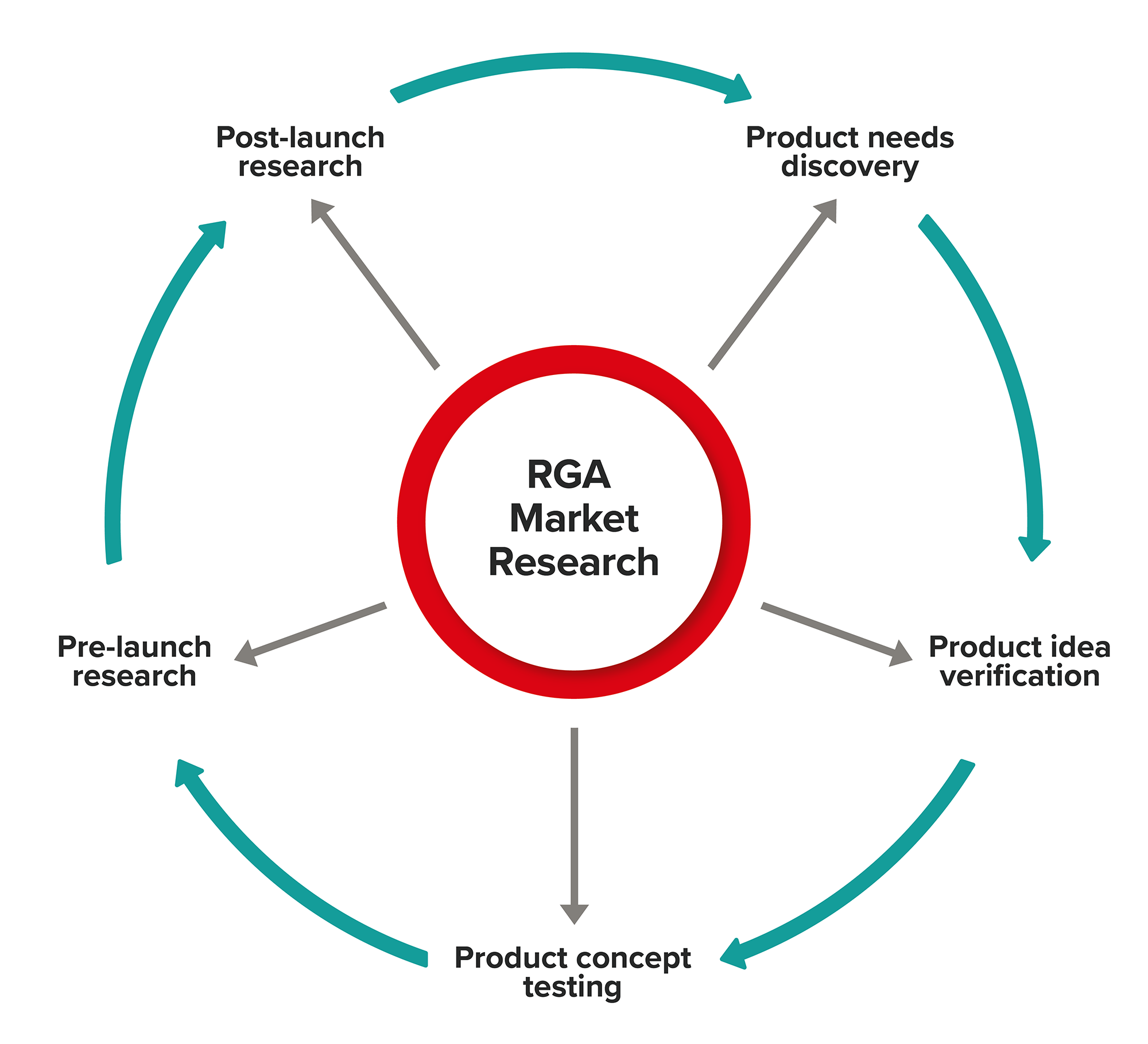Research Early and Often
Voice of the Distributor (VoD) research is proving to be a key factor for success. It enables client-specific differentiation and customization in underwriting, sales channel optimization, and more, which raises the likelihood of a successful launch and ongoing sales.
The two main types of VoD research RGA uses in new product development are quantitative secondary market research and qualitative research. For the quantitative research, RGA gathers and analyzes relevant and helpful market data, such as monthly market trends and new product sales, which often provides valuable information that can then be expanded upon with qualitative research.
For the qualitative research, as products are developed, RGA contacts a curated pool of distributors for interview sessions. These sessions take place continuously, either one-on-one or in group settings, and focus on specific questions about how sellers and buyers are responding to the product’s concept, design, pricing, and more.
Concept testing, repeated frequently, helps product developers determine if the concept behind a new product or service is actually connecting with potential customers, and if not, how best to revise the design to make it do so.
Interview sessions held throughout the development process, either weekly, biweekly, or monthly, yield much more effective information for targeting features and tactics prior to a launch. The subgroup of the distributor pool contacted at each stage is different and depends on the type of research needed and the product being considered. Subgroup responses make it easier to pinpoint market issues or problems, which enables optimization of the product as well as its sales proposition.

Case Study: Responding with Refinements
Sometimes, issues uncovered by VoD research can surprise. For example, during the design and development phase of a new staged cancer product with an unusual payout scheme, frequent VoD interviews by the RGA Korea team discovered the scheme was adding substantial complexity to the sales process.
Questions asked during the six-month market research interview period included:
- How did you feel when you first heard this new concept?
- To whom can you sell this product?
- How can this product be revised to increase sales?
From the responses, it was clear that general agents found the structure of the new point system for claims and payouts was much more complicated to explain than they liked. Sales consultants generally prefer a simple pitch, such as “if you get cancer, you can claim for 2 million won.” In response to this feedback, the team added two structural elements that ultimately reduced the payout structure’s complexity.
Another change resulting from the VoD discussions was the addition of an online support system that allows customer to easily obtain details related to their policies. By talking to the agents, the team learned that customers do not generally remember their policy details, so will ask for them, such as what is covered and payout amount. With the online system, customers can find answers to such questions on their own.
Conclusion
For insurers and their reinsurance partners, market research is a powerful tool to help accelerate product innovation and enhance the sales journey. This is only possible by leveraging research insights in every stage of the product development process and ensuring close collaboration among different teams, such as business development, product development, and research. This collaborative approach helps make sure that targeting and marketing are aligned, that a product has its best opportunities for success, and that it can evolve as its market evolves.




